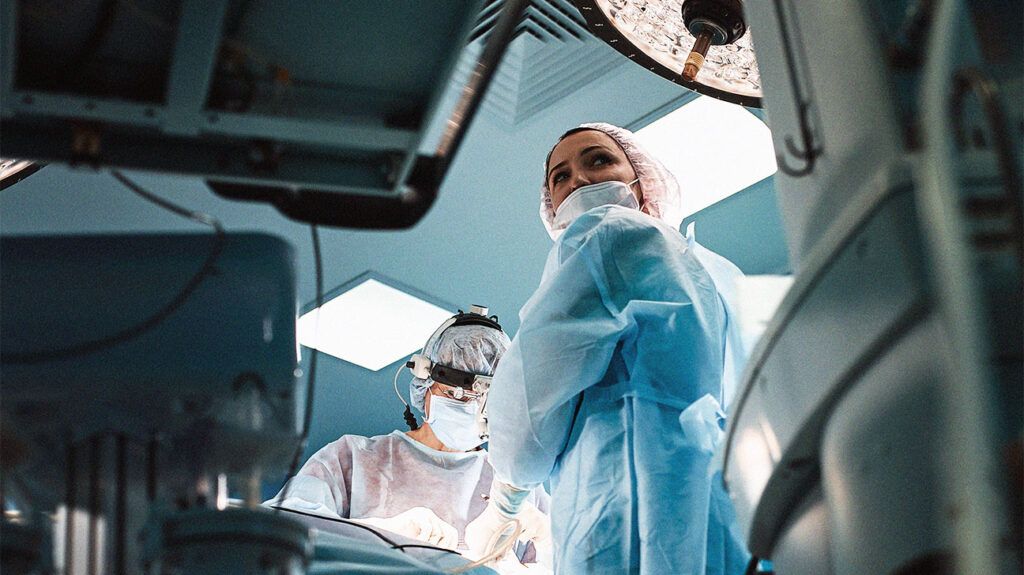There is a definite link between pancreatic cancer and a yellowing of the skin, called jaundice. Jaundice can happen when a cancerous growth presses on the bile duct, a tube that takes bile from the liver to the small intestine.
Most people with pancreatic cancer have jaundice as one of their first symptoms. Jaundice also causes a yellow tinge in the whites of the eyes, dark-colored urine, light-colored stools, and itchy skin.
Management approaches include the insertion of a tube into the bile duct to keep it open or surgery that bypasses the blockage.
This article examines pancreatic cancer and yellow skin, including management approaches. It also discusses other symptoms of this form of cancer, survival rates, and commonly asked questions.

Cancer in the head of the pancreas can cause these symptoms. Cancers in other locations of the pancreas may not present with jaundice unless the cancer has spread to other areas of the body.
Jaundice refers to the yellowing of the skin and the whites of the eyes. Other indications of jaundice include:
- dark urine
- itchy skin
- light-colored or greasy stools
What causes jaundice?
Jaundice occurs due to a buildup of bilirubin. This dark, brown-yellow substance is a component of bile, a liquid the liver makes.
Bile travels through the common bile duct into the small intestine, where it works to break down fats. Eventually, bile leaves the body through the stool.
Jaundice occurs when an obstruction in the common bile duct prevents bile from reaching the small intestine, resulting in an accumulation of bilirubin.
When does jaundice occur in pancreatic cancer?
Jaundice may occur during any stage of pancreatic cancer, depending on its location.
Cancer that begins in the head of the pancreas is close to the common bile duct. This can cause pressure on the duct and lead to jaundice, starting in the
In contrast, cancer that begins in the body or tail of the pancreas may not cause jaundice until a later stage. This is because it may not exert pressure on the bile duct until it has spread through the pancreas.
By the time this happens, the cancer has frequently spread past the pancreas. When pancreatic cancer spreads, it often reaches the liver, which may also cause jaundice.
It is worth noting that conditions other than pancreatic cancer can also cause jaundice.
Learn more about jaundice.
In some cases, placing a stent in the bile duct
Another option is pancreatic biliary bypass surgery. In this procedure, a doctor cuts the bile duct above the blockage and reattaches it to the small intestine. This is almost always effective in relieving jaundice.
These two approaches may not be appropriate for every person. In these cases, using antihistamines and keeping the skin cool and moist may decrease itching. Diphenhydramine (Allermax, Banophen, Benadryl) is an example of an antihistamine.
Learn more about pancreatic cancer treatments.
Other symptoms of pancreatic cancer include:
- Unintended weight loss: This is
very common , as people with the condition have little appetite. - Back or belly pain: This is also common, as cancer that begins in the body or tail of the pancreas can become very large, putting pressure on nearby organs and causing pain. However, back or belly pain is most frequently due to a condition other than pancreatic cancer.
- Nausea and vomiting: Cancer that puts pressure on the far end of the stomach can result in a partial blockage, making it difficult for food to get through. This can lead to vomiting or nausea.
- Blood clots: In some individuals, the first sign of pancreatic cancer is a blood clot in a large vein, frequently in the leg. This can cause redness, pain, warmth, and swelling in the leg. If a piece of the clot breaks off and travels to the lungs, it can cause chest pain. This can even be life threatening.
- Liver or gallbladder enlargement: A blocked bile duct can cause bile to accumulate in the gallbladder, enlarging it. If the cancer spreads to the liver, it will also cause liver enlargement.
- Diabetes: This can occur when the cancer destroys insulin-making cells, but this is rare. More often, pancreatic cancer causes small blood sugar changes.
Learn more about pancreatic cancer symptoms.
A person’s outlook will depend on when a doctor first makes a diagnosis.
The 5-year relative survival rate (RSR) refers to the percentage of people with pancreatic cancer who will be alive at the end of 5 years compared with those who do not have the condition.
The
| SEER stage | 5-year RSR |
| Localized | 44% |
| Regional | 16% |
| Distant | 3% |
| All SEER stages combined | 13% |
Learn more about the survival rates for pancreatic cancer.
Below are answers to commonly asked questions about jaundice due to pancreatic cancer.
Is jaundice the last stage of pancreatic cancer?
Jaundice may appear at any stage of pancreatic cancer, depending on where the cancer starts. Cancer that begins in the head of the pancreas may cause jaundice at an early stage, while cancer that begins in the body or tail of the pancreas may not produce jaundice until later.
What are the symptoms of the last stage of pancreatic cancer?
People with pancreatic cancer
Yellow skin, also called jaundice, is a very common symptom of pancreatic cancer. Jaundice can occur when a tumor puts pressure on the bile duct, causing an obstruction and resulting in the buildup of bilirubin. Other signs of jaundice include yellowing of the whites of the eyes, dark urine, and light-colored stools.
There are two approaches to managing jaundice. A doctor may insert a stent into the bile duct to keep it open, or they may do pancreatic biliary bypass surgery.
Pancreatic cancer may also cause unintentional weight loss, blood clots, nausea, and vomiting. Survival rates depend on how early a diagnosis occurs, but the overall 5-year relative survival rate is 13%.
